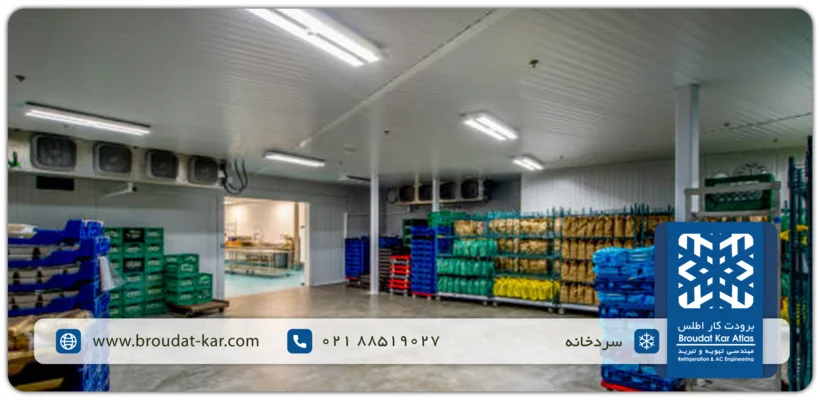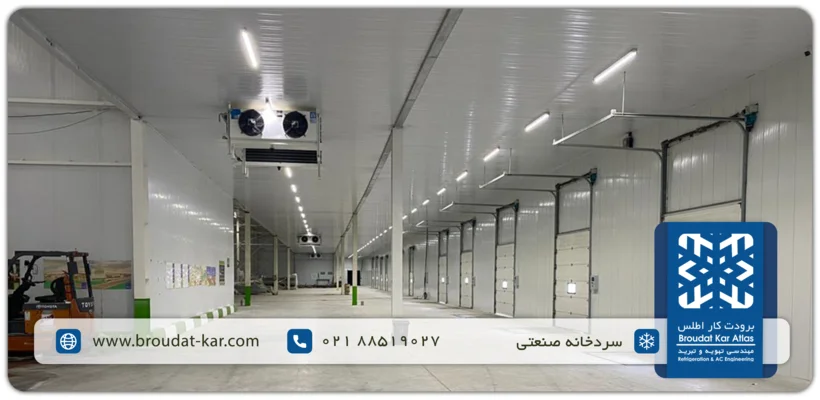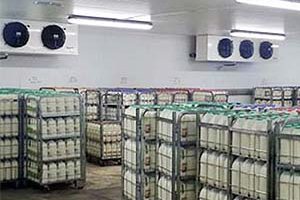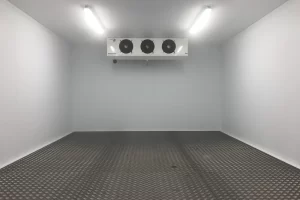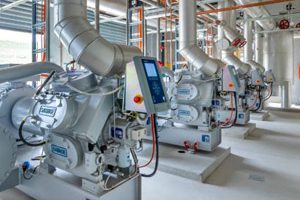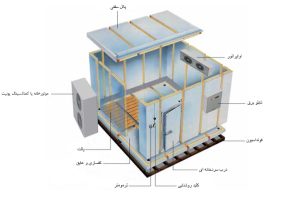Installation and Commissioning of Cold Rooms
The meticulous installation and commissioning of a cold rooms facility in a principled and standardized manner are paramount. This guarantees the enhancement of the cold storage facility’s performance, efficiency, and safety. In the subsequent discussion, we will explore the significance of installing and commissioning a cold rooms facility and its profound impact on your business.
Preservation of Product Quality
Cold storage primarily serves the purpose of preserving products, including food items, pharmaceuticals, and perishable goods. The proper installation and commissioning of cold rooms equipment ensure the maintenance of the desired temperature environment. This, in turn, contributes to an extended product shelf life, minimized spoilage, and the preservation of overall product quality.
Prevention of Financial Loss
Inadequately installed and commissioned cold storage may lead to temperature fluctuations, system failures, and reduced energy efficiency. Persistent issues of this nature can result in financial losses attributed to product spoilage, increased energy costs, and the necessity for frequent repairs. Appropriate installation and commissioning mitigate these risks, fostering long-term cost savings.
Compliance with Regulations
Certain industries, such as pharmaceuticals, uphold strict regulations and standards for cold storage. Rigorous engineering design, installation, and commissioning of cold storage ensure compliance with these regulations.
Energy Efficiency
Cold storage facilities tend to be energy-intensive. Systems lacking precision in engineering and installation not only elevate operational costs but also pose adverse environmental impacts. Installation and commissioning by specialized individuals can optimize the refrigeration system, making it more energy-efficient and curbing energy bills.
Minimization of Downtime
The repercussions of downtime in a cold storage facility can be catastrophic. Frequent breakdowns not only lead to product losses but also disrupt the supply chain. Cold storage facilities designed by experienced engineers and installed by skilled technicians experience significantly less downtime.
Safety
Safety is of utmost importance in cold storage facilities. Beyond ensuring the safety of stored products, the facility’s safety concerning electrical and mechanical aspects is crucial. Employing knowledgeable, experienced, and committed individuals for installation and commissioning provides assurance that your cold storage is safe, minimizing the risk of accidents due to negligence.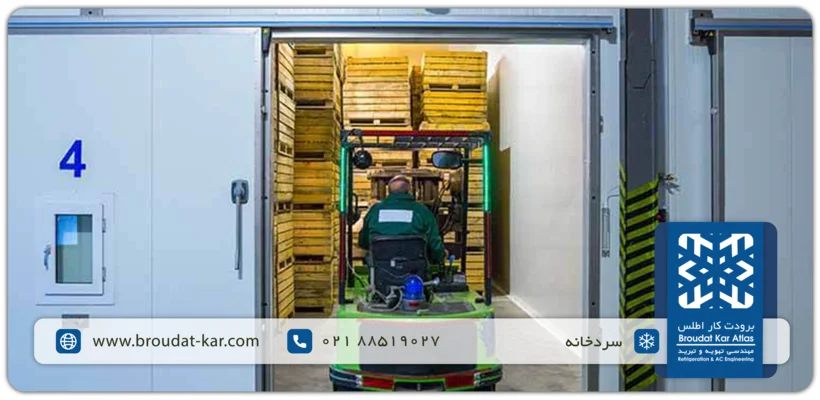
Long-Term Reliability
Cold storage facilities constitute a substantial investment. Proper installation and commissioning of equipment not only guarantee optimal short-term performance but also contribute to the long-term reliability of the system. This translates to fewer breakdowns, reduced maintenance costs, and an extended operational lifespan for your equipment.
In summary, the engineering and proper installation of a cold storage facility are vital for preserving product quality, avoiding financial losses, complying with regulations, enhancing energy efficiency, minimizing downtime, ensuring safety, and achieving long-term reliability.

Call us for free consultation on refrigeration equipment
Installation Steps for Cold Storage
The installation and commissioning of each cold storage facility encompass various stages. While the number of steps required may vary for different cold storage facilities, the overall execution of a cold room can be categorized into the following stages:
Site Preparation
Cleaning and Leveling
The initial step in preparing the site for cold storage construction involves cleaning and leveling the area. This process includes the removal of obstacles and debris. Ground leveling is crucial to ensure a precise foundation and flooring. Proper grading and leveling also prevent water drainage issues, establishing a stable surface for the cold storage structure. Site preparation lays the foundation for a robust base, essential for the stability and lifespan of the entire cold storage facility.
Foundation and Flooring
- Foundation: Serving as the base upon which the entire structure rests, the foundation uniformly distributes the load and prevents settlement or structural issues over time.
- Flooring: In a cold storage facility, the flooring must withstand heavy forklift traffic and provide a sanitary surface. Particularly in freezing room and blast freezers, the flooring should include proper crawl space execution to prevent moisture leakage and concrete cracking. Adequate insulation and waterproofing are crucial for maintaining the desired temperature and preventing energy loss.
Installation of Refrigeration System
The installation of the refrigeration system is a fundamental stage in establishing a cold storage facility, directly influencing its ability to maintain the desired temperature. This stage comprises several key steps:
Assembly and Installation of Equipment
Cold storage comprises various components, including insulation or the cold storage body, compressors, condensers, evaporators, valves, and control systems. Skillful and precise installation of these components is essential for seamless and coordinated operation. The installation typically starts with the placement of insulated sandwich panels. Once the cold storage body is ready, other equipment is installed in its designated locations. Some equipment, such as compressors and condensers, may require a frame or foundation for proper placement.
The installation and commissioning of a cold room involve skilled engineers and technicians assembling and packaging various equipment to create an insulated space for the cold storage facility.
Piping and Wiring
After the equipment is in place, piping is laid for refrigerant gas, water, etc. The pipes can be made of copper, steel, or stainless steel, depending on the fluid type. Various types of valves, including manual valves, electric valves, pilot valves, strainer valves, check valves, etc., are incorporated along these piping routes. Subsequently, all electrical equipment needs to be wired and organized in an electrical panel. The quality of pipe and cable installation is critical. Pipe routes should be as minimal as possible, with proper sealing or insulation at different sections. Cables must be neatly run in a specified path, and the use of cable trays or conduits is essential.
These installation stages, from site preparation to refrigeration system setup, form the backbone of a reliable and efficient cold storage facility.
Temperature Monitoring and Control
Monitoring and controlling the temperature are crucial for preserving the quality and safety of stored products. Regular temperature control ensures that products remain within the specified temperature range, preventing spoilage, bacterial growth, and other quality issues.
Monitoring Systems for Cold Storage Temperature
Precise and regular temperature monitoring often relies on advanced temperature sensors and data logging equipment such as thermographs. These devices continuously measure temperature levels and provide real-time results to operators.
Cold Storage Repair and Maintenance Services
Regular maintenance and servicing are vital for the routine and efficient operation of a cold storage facility. These actions help prevent unexpected failures, increase equipment lifespan, and, in addition to reducing downtime, contribute to the overall reliability of the system.
Planned Inspections: Scheduled inspections are another crucial action. Operators should inspect all major cold storage equipment daily and, if any improper functioning or abnormal sounds are observed, take corrective action promptly.
Cleanliness and Hygiene: Maintaining cleanliness in both the interior of the cold storage and, of course, the engine room is essential and should always be a priority. Especially in industries such as food preservation, regular cleaning helps prevent contamination and reduces product wastage, ensuring the safety of stored products.
Achieving and Maintaining Energy Efficiency
Achieving and maintaining high energy efficiency levels requires proper maintenance of cold storage equipment. These measures include cleaning coils, replacing filters, checking for leaks, and ensuring all components are functioning optimally. When issues arise during maintenance, timely repairs or upgrades are essential to prevent more extensive problems. Adhering to maintenance guidelines provided by the manufacturer ensures that the facilities consistently meet safety standards and regulatory requirements.
By focusing on temperature monitoring and implementing a comprehensive maintenance and service program, a cold storage facility can operate at peak efficiency, guaranteeing the quality and safety of stored products while minimizing operational risks and energy consumption. These aspects are crucial for the long-term success of business owners and customer satisfaction.
At Atlas Refrigeration Company, we go beyond merely offering cold storage installation services. We strive to create a platform for businesses to thrive and deliver top-notch products through our expertise.
Cold Storage Installation and Commissioning Costs
The cost of installing and commissioning a cold storage facility is determined by factors such as the capacity and operating temperature of the cold storage, installation location, and the complexity of the installation process. Typically, the commissioning cost for each cold storage facility is estimated on a case-by-case basis.
For the execution and commissioning of industrial cold storage facilities, which are significantly larger than small commercial cold storage units, it generally takes several months. Additionally, for the construction of high-capacity cold storage facilities, a workshop must be equipped for the installation and construction of the cold storage, where technicians and engineers in the fields of mechanical, electrical, and civil engineering collaborate in the process.
The complexity of the installation process is another factor that influences the cost of cold storage installation. For example, the installation cost for cold storage units with different temperatures and processes such as pre-cooling and freezing is higher than for cold storage units that operate at a single temperature.
Summary
Atlas Refrigeration is a leading company in the refrigeration industry, recognized for its excellence in industrial cold storage installation and commissioning services. With a strong commitment to innovation, reliability, and customer satisfaction, we specialize in creating refrigeration solutions that adhere to the highest industry standards. Our experienced team can manage the quality and performance of your cold storage from the consultation, design, installation, and commissioning stages to ongoing maintenance with utmost proficiency.
The time needed for constructing and commissioning a cold storage facility correlates directly with its storage capacity. Larger capacities entail lengthier installation periods. For instance, while a 30-ton cold store typically takes 15 to 20 days to build, constructing a 10,000-ton cold store may require up to 6 months or more. Delays can also occur due to the requirement for specialized equipment with high power or in large quantities, which can prolong the manufacturing or importation process. However, Atlas Refrigeration Company has effectively streamlined construction and installation times in previous projects by employing an engineering-focused approach. Through meticulous scheduling and concurrent task execution, they have significantly reduced project timelines while maintaining stringent safety standards.
Typically, the cost of installing cold storage is determined as a percentage of the total equipment expenses required for construction. This percentage may range up to 20% for smaller facilities, but for larger installations, it usually falls between 10 to 15% of the equipment cost.
The electricity demand for smaller cold storage units is relatively modest. For instance, a 5-ton cold storage operating above zero can typically function on single-phase electricity. However, for higher capacities like a 30-ton cold storage, access to three-phase electricity is necessary. The required current for small cold rooms typically ranges between 3 and 40 amps.
Absolutely. It’s essential to shield both the equipment and the cold room itself from direct sunlight and rainfall. This necessitates a waterproof roof for the cold room and a canopy for the condensing unit installed outdoors.
Related posts
Installation and Commissioning Of Cold Rooms
What is Industrial Cold store? An industrial cold store is a large-scale facility designed and constructed to preserve and
What is a Freon Cold Store? A freon cold store, is a cooling appliance that utilizes Freon refrigerant within its
Introduction to Ammonia Refrigeration Systems – Properties, Applications, and Equipment Overview Ammonia, with the chemical formula NH3 and the refrigerant
Design and Construction of Industrial Cold Rooms Designing and constructing an industrial cold storage facility involves creating a specialized warehouse
